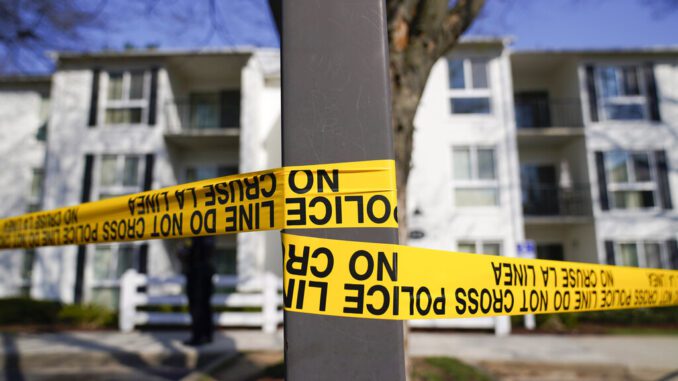
RALEIGH — After two record-breaking years in a row, 2021 homicide rates in North Carolina cities seemed to ease slightly in some places but remained at greatly elevated levels compared to conditions before the 2019 nationwide spike.
Among the state’s four largest cities — Charlotte, Raleigh, Greensboro and Durham — two of them, Charlotte and Greensboro, broke records in 2020 for homicide. Both cities are now reporting a slight decline in homicides in 2021, while Durham is reporting a significant increase.
Raleigh, despite having a much-larger population of 468,000 compared with Greensboro’s 299,000 and Durham’s 284,000, has maintained a lower homicide rate compared with these nearby Piedmont cities. While cities across the country and state had spiking homicide rates in recent years, Raleigh had 29 in 2019 and 27 in 2020. These numbers are comparable to other years before the spike such as 2017, when the city also had 27 homicides.
And despite much smaller populations, Durham and Greensboro both had higher 2020 homicide totals than Raleigh’s 27, with 33 and 62 respectively. NSJ called public information officers with Raleigh’s police department to inquire if their initial 2021 numbers remained in this lower range, but did not hear back by press time.
Charlotte, by far the state’s largest city, with 875,000 residents, saw a record-breaking 117 homicides in 2020, but they reported that their year-end number for 2021 had fallen to 96. Even with this reduction, the 2021 numbers are still far higher than what the city had been used to before the 2019 national surge in homicides, with only 57 homicides in 2018.
Ronald Glenn, public information officer for the Greensboro Police Department, told NSJ on Jan. 10 that Greensboro, which also broke their city’s homicide record in 2020, with 62 homicides, saw a reduction to 53 in 2021.
“I don’t know that it’s any one thing that necessarily did it; it was probably a combination of things,” Glenn said on why homicides had seen some improvement over the prior year.
Glenn said one major thing that they believe had yielded results was an extra focus on “trying to confiscate more of the illegal guns and getting guns off the street.” He also said they focused on “trying to use the data we have available to make sure we’re putting the resources in the right places.”
Another major area of focus was looking at violent repeat offenders and getting them off the street, since they are among the most likely to commit future violent crimes. The last thing he mentioned was building and maintaining community relationships. Many departments note this effort is key at the moment due to strained relationships between law enforcement and many citizens.
“All of those things combined probably led to the reduction we’re seeing this year and hopefully continue to see,” Glenn said.
Asked whether he believes the numbers would continue to come down and maybe return to the much-lower rates of the past, Glenn said, “You always hope that those numbers are getting lower and you’re doing things to help reduce the likelihood that crime occurs in your community. So, at this point, I don’t know if we’d necessarily say that we know what those numbers will be accurately in the next few years. But of course we’re going to continue to take every step and every measure we can to help reduce those numbers.”
Durham, on the other hand, was not able to report a reduction in homicides this year. After not seeing quite the spike as other cities, with 33 in both 2019 and 2020, Durham has seen their homicide totals jump to 45 in initial reports to media. A point of contrast in the numbers, however, is that there were more shootings in 2020, but fewer of them were deadly; while in 2021, there were fewer shootings, but more of them were deadly.
In the fall, the Durham Police Department put out a 2021 Stop the Gun Violence public service announcement to bring the community’s attention to the problem.
In the PSA, Sgt. Joshua Brigante said, “We see on the news constantly the number of shootings is in the hundreds — last year it was pushing 1,000 — so you’d think that around every corner there’s somebody with a gun ready to shoot. But through our investigations, we’ve learned that the percentage of the population that’s committing a lot of these shootings is very low compared to the number of shootings that are actually happening.”
Brigante then asked the community for their help in getting this small number of people off the street.
Overall, the comparison between 2020 and 2021 homicide numbers in North Carolina’s biggest cities is a mixed bag. While there are some potential signs for optimism, violence didn’t slow significantly or across the board.



